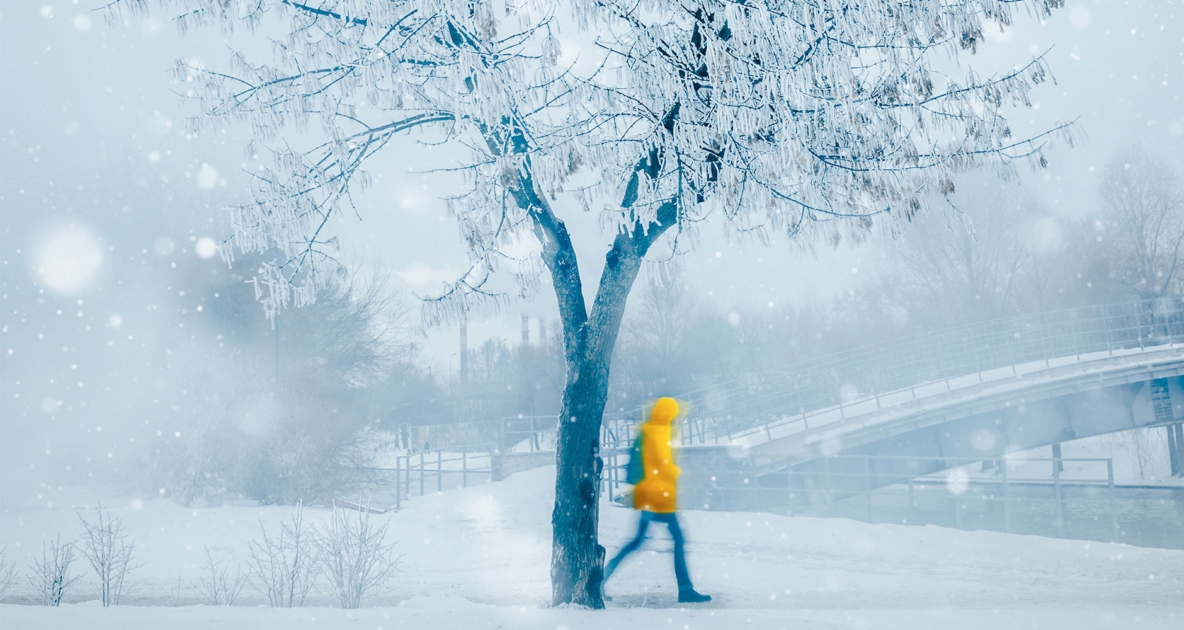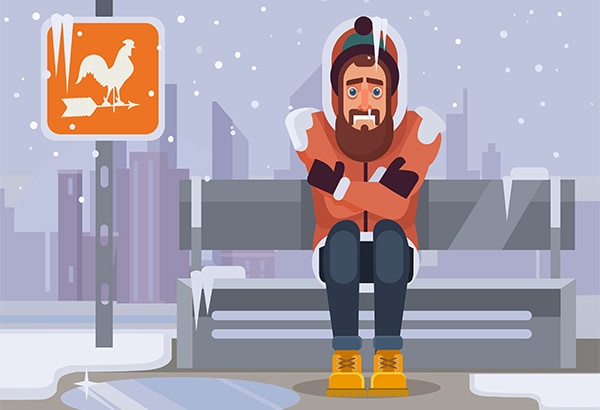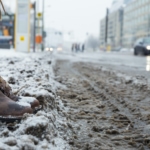Review of Winter Weather 2018-2019
Each year, before we launch our winter forecast, we like to take a look back at the prior year's predictions. How did we do? Here are the highlights of winter 2018-19.

Every year, right before we launch our newest weather forecast for the winter ahead, we like to “rewind” and take a look back at last year. Our winter prediction for 2018-2019 brought about a lot of attention and controversy. In our long-range outlook, which we released in August 2018, we called for “teeth-chattering cold and unusually snowy and/or wet conditions across the Pacific Northwest, Northeast, and Mid-Atlantic States.” We forewarned that the coldest temperatures of the season would arrive in mid-February for zones 1, 2, and 3, and predicted a stormier-than-normal March, which would push snow totals to above normal for the northern/central Rockies and Plains.
So what happened? Here are some winter 2018-2019 highlights:
- A late January Arctic blast resulted in Chicago having subzero temperatures for 52 straight hours. No all-time records were broken in the Windy City, but the low temperature of -23°F was close to breaking the all-time record of -27°F. On January 29th, Chicago’s wind chill dipped to -52°F! That’s some teeth-chattering cold!
- On January 31st, 2019, the all-time coldest record for Illinois was reported in Mt. Carroll at -38°F.
- February kicked off on a frigid note from Minnesota and Wisconsin east through the Great Lakes into upstate New York and across to New England. High temperatures were as much as 30°F colder than normal, and low temperatures were subzero or in the single digits for most areas. Strong winds created dangerously low wind chills, causing some schools to close.
- For the first time on record, Los Angeles went an entire February without once hitting 70°F. And the City of Angels registered this past February as its coldest month since 1962, with temperatures averaging about 5 degrees colder than normal.
- And the month of February across the contiguous U.S. averaged nearly 2°F below normal, ranking it in the coldest top third in 125 years of record keeping.
Snowfall?
- Caribou, Maine, had its snowiest January ever, with 59.8 inches, and 165 had its snowiest January ever, with 59.8 inches, and 165 inches total for the winter months!
- Record snowfall and cold temperatures were reported from Washington State to Wisconsin in February. Eau Claire, Wisconsin, set a record for all-time snowiest month with 53.7 inches.
- Sea-Tac Airport (Seattle) saw its snowiest February (20.2 inches) since record-keeping first began in 1945.
- On February 20th, the first measurable snowfall (½ inch) in more than a decade fell in Las Vegas, Nevada. And the very next day, a total of 35.9 inches of snow was measured at Pulliam Airport (just south of Flagstaff, Arizona)—a new 1-day record.
- Omaha, Nebraska, saw its all-time snowiest winter with 46.1 inches.
Statistically Speaking
Sounds like a pretty accurate forecast, doesn’t it? You may be surprised to learn that climatologists have indicated that winter 2018-19 turned out to be slightly warmer (1.2°F) than normal, statistically speaking.
The reason? Taking into account the 90-day interval from December 1st to February 28th (defined as “meteorological winter”), the mean temperature was 33.4°F or 1.2°F above average. Yet, the last week of January through February, and into early March, temperatures averaged more than 2°F below normal nationwide. But overall, January was 2.6°F above normal, and December was 2.9°F above normal.
However, we would contend that the overall 1.2°F above-normal winter temperature was of little solace to the folks in the southeast U.S. who were digging out of their big pre-Christmas snowfall, or the folks around the Great Lakes and Plains who were enduring hours of subzero temperatures and life-threatening wind chills in late January!
What’s in Store for Winter 2019-2020?
Our winter weather outlook is out! Take a look at what we’re predicting!
For a complete look back, turn to pages 138-139 of the 2020 Farmers’ Almanac.

Caleb Weatherbee
Caleb Weatherbee is the official forecaster for the Farmers' Almanac. His name is actually a pseudonym that has been passed down through generations of Almanac prognosticators and has been used to conceal the true identity of the men and women behind our predictions.







I like it when it rains.
I’ve seen the Farmers Almanac Years ago. Maybe now I should get My own copy.
What is the weather going to be like in October on 2020
How often does the farmer almanac get the winter forecast right? This year they got it wrong for my area of the country.
Hi Ellie,
As for the accuracy, readers claim we’re accurate about 85% of the time, which we think is pretty good. Even the best miss one on occasion. Where are you located?
You were spot on for east Tennessee! Wet and cold.
how will the weather be in kentucky this winter?
Hi Willy, did you check the forecast and maps? There are also links to your zone: https://www.farmersalmanac.com/extended-forecast
What’s going happen in nc.
As a Marylander, I would like to know how Caleb did with forecasts in the Mid-Atlantic. This area seems to have been omitted. Thanks.
Hi Keith, Caleb says, “Last year’s forecast, which we released in August 2018, we called for ‘teeth-chattering cold and unusually snowy and/or wet conditions across the Pacific Northwest, Northeast, and Mid-Atlantic States.’ The Mid-Atlantic got its fair share of the snowy and wet conditions, with the first significant snows of the year on 1/13, followed by Winter Storm Patra on 1/20–the same system that brought snow to Las Vegas also dumped a fair amount of snow and ice on Maryland. In February, we called for snow for the Presidents Day holiday in Zone 1, and sure enough, this happened in MD: https://www.youtube.com/watch?v=poBssi0537A&t=10s.
All in all, the snowfall totals for last season in Maryland were 18.3 (January = 7.8, Feb = 6.1, and March = 2.7). Certainly not as bad as some years.”